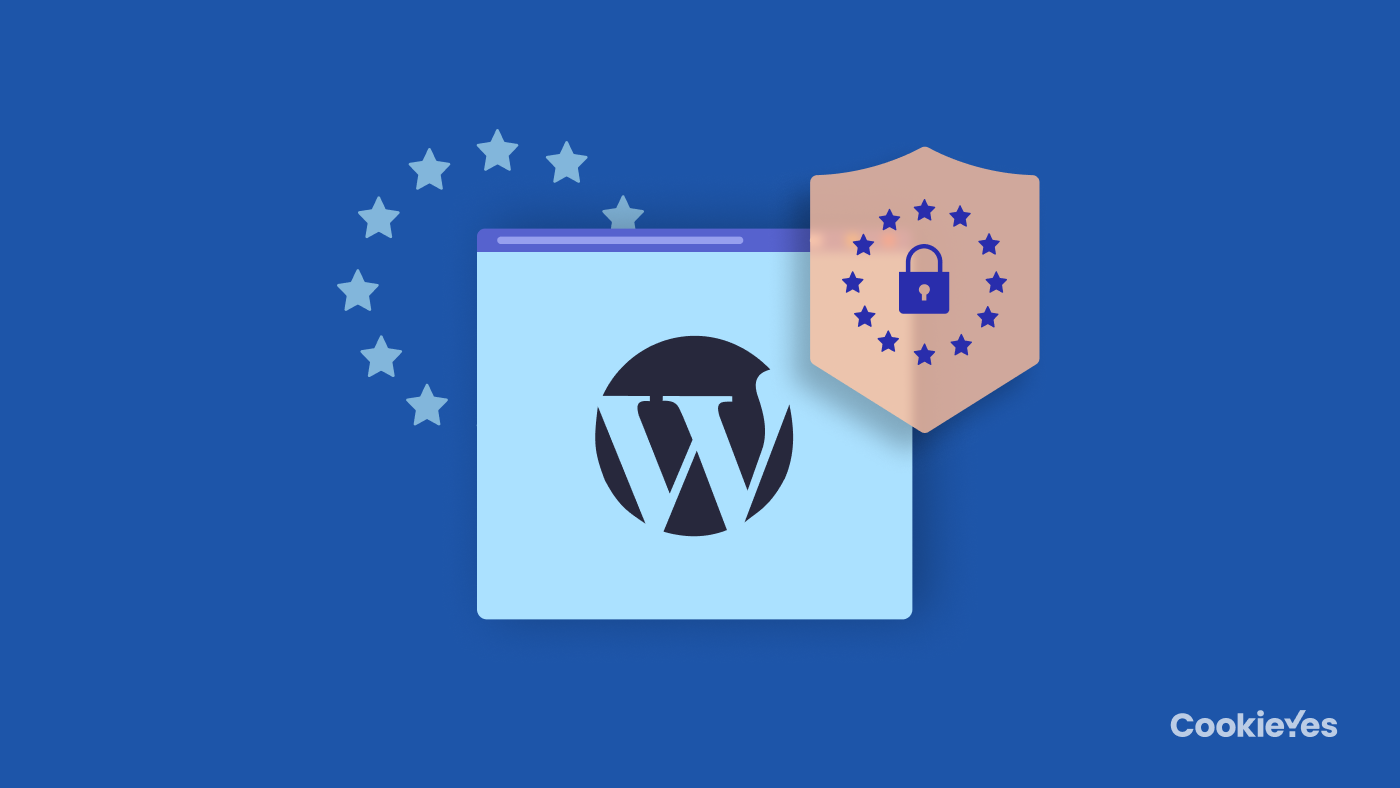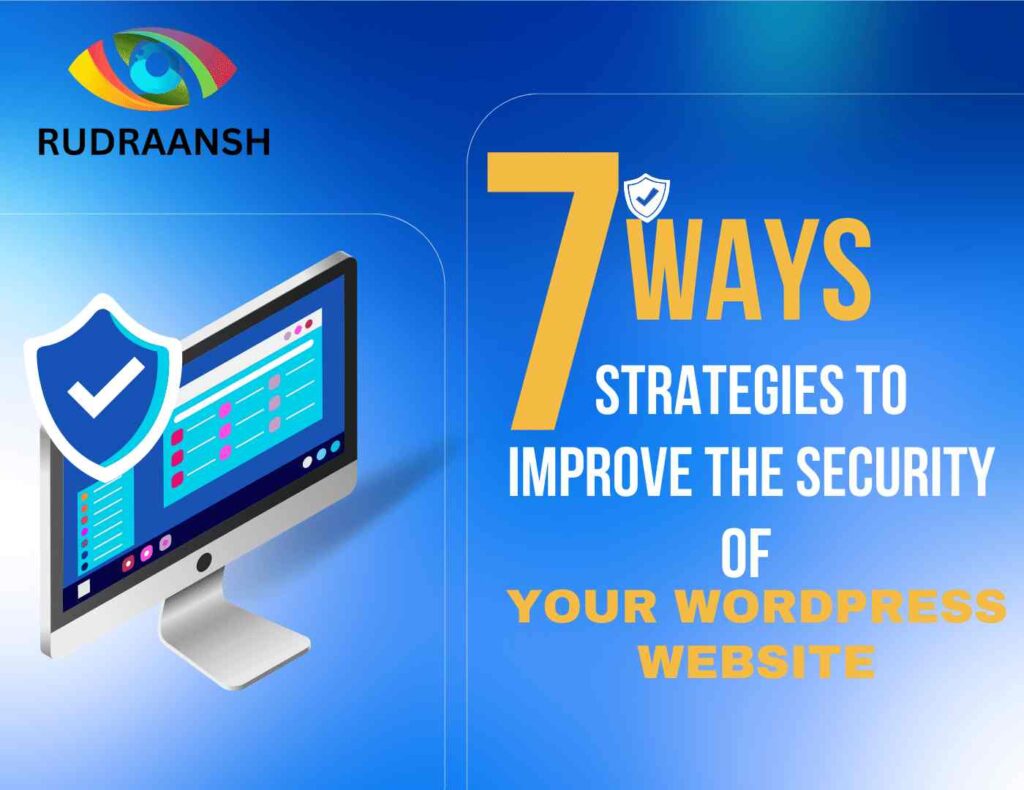Top 7 ways to improve WordPress website security for beginners: Use strong passwords and regularly update themes and plugins. Install a reputable security plugin and enable two-factor authentication.
Securing your WordPress website is crucial to protect your data and maintain user trust. Many beginners overlook essential security measures, making their sites vulnerable to attacks. Simple practices like using strong passwords, regularly updating themes and plugins, and installing a security plugin can significantly enhance your site’s safety.
Enabling two-factor authentication adds another layer of security. Additionally, limit login attempts and regularly back up your website. These steps are easy to implement and can prevent potential threats. Prioritize these measures to ensure your WordPress site remains secure and reliable.

Importance Of Website Security
The importance of website security cannot be stressed enough. If your WordPress website is not secure, you risk losing data, money, and trust. For beginners, understanding why website security matters is the first step.
Risks Of Insecure Websites
Insecure websites face many risks that can harm both the owner and visitors.
- Data Breaches: Hackers can steal sensitive information.
- Malware Infections: Malicious software can corrupt your site.
- SEO Damage: Insecure sites are penalized by search engines.
- Loss of Trust: Visitors won’t return to a hacked site.
- Legal Consequences: Data breaches can lead to fines.
Benefits Of Strong Security
Strong security measures provide many benefits for your WordPress website.
- Protection of Data: Keep sensitive information safe.
- Improved SEO: Search engines favor secure websites.
- Visitor Trust: A secure site builds visitor confidence.
- Reduced Downtime: Fewer attacks mean less downtime.
- Compliance: Meet legal requirements for data protection.
By understanding the risks and benefits, you can better appreciate the need for strong website security. This knowledge will guide you in taking the necessary steps to secure your WordPress site.
Use Strong Passwords
Securing your WordPress site starts with using strong passwords. Weak passwords make it easy for hackers to gain access. Strengthening your passwords is a simple yet effective way to enhance security.
Creating Complex Passwords
Complex passwords are harder to guess. Follow these tips to create strong passwords:
- Use at least 12 characters.
- Include uppercase and lowercase letters.
- Add numbers and special characters.
Password Management Tools
Remembering complex passwords can be difficult. Password management tools can help. Here are some popular options:
| Tool | Features | Price |
|---|---|---|
| LastPass | Cloud storage, auto-fill, secure sharing | Free/Premium |
| 1Password | Secure vault, password generator, multi-device sync | Subscription |
| Dashlane | Dark web monitoring, VPN, password health report | Free/Premium |
These tools store and generate strong passwords. They reduce the risk of using weak passwords.
Keep WordPress Updated
Keeping your WordPress website updated is crucial for security. Updates patch vulnerabilities and enhance functionality. Ignoring updates can expose your site to risks. Let’s explore how to keep your WordPress website updated effectively.
Core Updates
The WordPress core is the foundation of your website. It includes essential files that make your site run. Regularly updating the core ensures your site is protected against threats.
- Go to your WordPress dashboard.
- Navigate to Dashboard > Updates.
- If an update is available, click Update Now.
Set your site to auto-update for minor releases. Use the following code in your wp-config.php file:
define( 'WP_AUTO_UPDATE_CORE', minor );Plugin And Theme Updates
Plugins and themes add features and design to your website. Keeping them updated is essential for security. Outdated plugins and themes can be exploited by hackers.
- Go to your WordPress dashboard.
- Navigate to Plugins > Installed Plugins.
- Click Update Now next to any outdated plugin.
- Repeat for themes by navigating to Appearance > Themes.
Enable auto-updates for plugins and themes:
add_filter( 'auto_update_plugin', '__return_true' );
add_filter( 'auto_update_theme', '__return_true' );Keeping your WordPress core, plugins, and themes updated is a simple but powerful way to secure your website.
Install Security Plugins
To improve your WordPress website security, the first step is to install security plugins. These plugins offer various features to protect your site from threats like malware, brute force attacks, and unauthorized access. Let’s dive into the specifics of choosing and configuring these essential tools.
Top Security Plugins
Choosing the right security plugin is critical. Below are some of the best options:
- Wordfence Security: Provides firewall and malware scanning.
- iThemes Security: Offers multiple layers of security.
- Sucuri Security: Includes security activity auditing and malware scanning.
- All In One WP Security & Firewall: Great for beginners and includes a visual graph to explain security metrics.
Configuring Security Plugins
Once installed, it’s important to configure your plugins properly. Here are some steps:
- Activate the plugin from your WordPress dashboard.
- Set up firewall rules to block suspicious activities.
- Enable malware scanning to detect and remove threats.
- Configure login security to limit login attempts and enable two-factor authentication.
Most plugins offer default settings that are good for beginners. Adjusting these settings can enhance your website’s security even further. Always keep the plugins updated to ensure maximum protection.
Enable Two-factor Authentication
One of the best ways to secure your WordPress website is to enable two-factor authentication (2FA). This added layer of security helps protect your site from unauthorized access. Here’s how you can set up two-factor authentication and why it’s essential for beginners.
How Two-factor Authentication Works
Two-factor authentication, or 2FA, requires two forms of identification. First, you enter your password. Second, you provide a code sent to your phone or email. This makes it harder for hackers to access your site.
Without 2FA, anyone with your password can log in. With 2FA, they need both your password and the code. This extra step significantly improves your site’s security.
Setting Up Two-factor Authentication
Setting up 2FA on your WordPress site is simple. Follow these steps:
- Install a 2FA plugin. Popular options include Google Authenticator and Authy.
- Activate the plugin and go to its settings.
- Choose the method for receiving your code. Options include SMS, email, or an app.
- Scan the QR code provided by the plugin using your chosen app.
- Enter the code generated by the app to complete the setup.
For beginners, here’s a quick comparison of popular 2FA plugins:
| Plugin | Features | Ease of Use |
|---|---|---|
| Google Authenticator | Free, Easy Setup, Reliable | Very Easy |
| Authy | Free, Multiple Device Sync, Backup Codes | Easy |
| Duo | Free, Push Notifications, Secure | Moderate |
Enabling 2FA is a crucial step in securing your WordPress site. It adds an extra layer of protection, making it much harder for unauthorized users to gain access.

Regular Backups
Regular backups are essential for WordPress website security. They help you recover your site if something goes wrong. This includes hacks, server failures, or accidental deletions. Let’s explore how to manage backups effectively.
Backup Solutions
Choosing the right backup solution is crucial. Here are some popular options:
- UpdraftPlus: A user-friendly plugin with many features.
- BackupBuddy: This plugin offers comprehensive backup options.
- VaultPress: Offers real-time backups and security scans.
Each solution has its unique features. Compare them to find the best fit for your needs.
Scheduling Regular Backups
Regular backups ensure you always have a recent copy of your site. Follow these steps to set up scheduled backups:
- Install your chosen backup plugin.
- Navigate to the plugin settings.
- Set the backup frequency. Daily or weekly backups are ideal.
- Select the storage location. Options include Dropbox, Google Drive, or your server.
- Save your settings and activate the schedule.
Automating backups saves time and reduces risks. Always test your backups to ensure they work.
Secure Your Hosting
Securing your hosting is a vital step in improving your WordPress website security. A secure host ensures that your site is protected against various threats. Let’s explore how you can secure your hosting effectively.
Choosing A Secure Host
Picking the right hosting provider is crucial. Look for hosts that offer SSL certificates and daily backups. These features protect your data and ensure your site stays safe.
Consider the reputation of the host. Read reviews and check ratings to find reliable providers. Popular secure hosts include:
| Hosting Provider | Key Features |
|---|---|
| SiteGround | Free SSL, daily backups, top-notch support |
| Bluehost | Free SSL, site monitoring, malware protection |
| Kinsta | Daily backups, free SSL, DDoS protection |
Server-level Security Measures
Ensure your host provides robust server-level security measures. These measures include firewalls, intrusion detection systems, and malware scans. These features help in detecting and preventing attacks.
Check if your host offers automated updates for server software. Keeping software up-to-date helps in closing security loopholes.
Enable two-factor authentication (2FA) for your hosting account. This adds an extra layer of security, making it harder for hackers to access your data.
- Use a host that provides firewalls
- Look for hosts with intrusion detection systems
- Ensure your host performs regular malware scans
Implement these server-level security measures to keep your WordPress website safe.
Limit Login Attempts
Limiting login attempts is a simple yet powerful way to enhance your WordPress website’s security. By restricting the number of login attempts, you can prevent unauthorized access and protect your site from brute force attacks.
Preventing Brute Force Attacks
Brute force attacks involve guessing passwords repeatedly until the correct one is found. These attacks can compromise your website’s security. Limiting login attempts helps in stopping these attacks by blocking multiple failed attempts.
Setting Login Attempt Limits
To set login attempt limits, you can use plugins like Limit Login Attempts Reloaded or Wordfence Security. These plugins allow you to specify the maximum number of failed login attempts before locking out the user.
- Install and activate the plugin from the WordPress repository.
- Navigate to the plugin settings.
- Configure the number of allowed attempts (e.g., 3-5 attempts).
- Set the lockout duration (e.g., 15 minutes to 1 hour).
Here’s a quick example of how to configure the settings:
| Setting | Recommended Value |
|---|---|
| Allowed Attempts | 5 |
| Lockout Duration | 30 minutes |
| Notify Admin | Yes |
By following these steps, you can significantly improve your website’s security. Remember to keep your plugins updated for the best protection.

Frequently Asked Questions
How Can I Secure My WordPress Login?
Use strong passwords and enable two-factor authentication. Regularly update your WordPress and plugins to the latest versions. Limit login attempts to prevent brute force attacks.
Is An Ssl Certificate Necessary For WordPress Security?
Yes, an SSL certificate encrypts data between your site and visitors. It protects sensitive information and builds trust. Many hosting providers offer free SSL certificates.
How Do I Backup My WordPress Site?
Use plugins like UpdraftPlus or BackupBuddy for automatic backups. Store backups in a remote location like cloud storage. Regular backups ensure you can recover from security incidents.
Can I Use Security Plugins For WordPress?
Yes, plugins like Wordfence and Sucuri offer comprehensive security features. They protect against malware, brute force attacks, and other threats. Regularly update these plugins for maximum protection.
Conclusion
Boosting your WordPress website security is essential. Implement these seven methods to protect your site effectively. Secure passwords, update plugins, and use reliable hosting. Regular backups and security plugins are crucial. Monitor your site for unusual activity. Following these steps ensures a safer online presence for beginners.
Stay proactive and keep your website secure.
